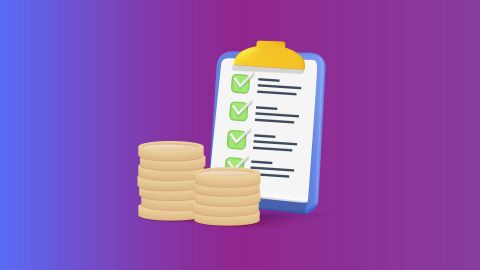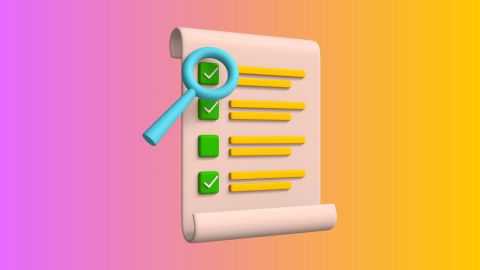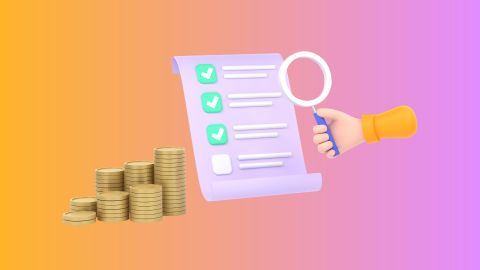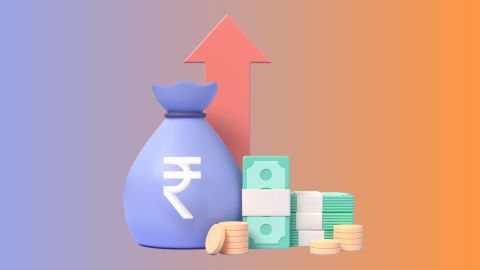Assets are valuable resources owned by individuals or businesses that have economic value and can bring future financial benefits. These resources are important for managing finances, helping to build wealth, generate income, and ensure long-term stability. This article will look at different types of assets, including both physical and non-physical assets, and explain whether they are current or fixed. It will also highlight the importance of assets in personal and business finances, stressing the need for good asset management to achieve financial success.
What is an Asset?
- An asset is a resource with economic value that an individual, company, or country owns or controls, expecting it will provide future benefits
- For businesses, assets are shown on the company’s balance sheet
- An asset can generate cash flow, reduce expenses, or improve sales, and it can be either tangible (like machinery) or intangible (like a copyright)
- For accounting, assets are usually classified as current, fixed, financial, or intangible
What is considered an asset?
An asset refers to any resource that holds economic value and has the potential to provide a current or future financial benefit to the individual or entity that owns or controls it. In simple terms, an asset is something of value that either belongs to you or is owed to you.
For example, if you lend money to someone, the amount you are due to receive is considered an asset, as it represents a future inflow of financial benefits. Conversely, for the borrower, this loan is classified as a liability, as it signifies an obligation to repay the borrowed amount.
Assets can take various forms, including cash, real estate, investments, intellectual property, and receivables from loans or sales. The classification of an asset depends on its nature, liquidity, and the role it plays in financial planning. Understanding assets is essential for both individuals and businesses, as they form the foundation of financial stability, investment strategies, and overall wealth management.
Three classifications of assets
Assets are typically classified in three ways:
Convertibility: This classification is based on how easily an asset can be converted into cash.
Physical Existence: Assets are divided into tangible assets (those with a physical presence) and intangible assets (those without a physical presence).
Usage: Assets are classified according to their function or purpose within a business operation.
Types of assets
Assets come in various forms, each serving a distinct purpose in financial management. Here is an overview of different types of assets:
Tangible assets:
Physical possessions like property and equipment.
Intangible assets:
Non-physical assets such as patents and trademarks.
Financial assets:
Investments like stocks and bonds.
Current assets:
Easily convertible assets like cash and inventory.
Fixed assets:
Long-term resources such as buildings and machinery.
What are the features of an asset?
Here are some key features of an asset:
- Ownership: Assets represent a business’s ownership or control, primarily for production purposes. These can be sold or converted into cash or cash equivalents
- Economic value: Every asset carries economic value and can be traded or sold in the market
- Revenue generation: Assets act as resources that drive business revenue. For instance, machinery boosts production capacity, leading to economic gains
- Maintenance cost: Assets usually incur maintenance or repair costs. Proper upkeep ensures smooth operations, while breakdowns can result in significant revenue losses
- Depreciation: Over time, assets lose value due to wear, tear, or obsolescence. This reduction, called depreciation, continues until the asset’s useful life ends
- Estimated useful life: Assets have a defined lifespan during which they operate effectively. This is determined by vendors or professionals based on the asset’s condition and usage patterns.
- Scrap value: As assets age and become obsolete, they retain a residual value, termed scrap value. Businesses can sell these to scrap dealers, earning indirect income from the sale
Examples of assets
Assets play an integral part in the financial stability and growth of both individuals and businesses. These can take quite a few forms including tangible assets such as real estate properties, vehicles, machinery, furniture, valuable antiques, stocks, bonds, cash, and savings accounts. On the other hand, intangible assets may include things like patents, trademarks, copyrights, brand recognition, and even goodwill in a business context. Assets may also include accounts receivable, which is the money owed to a company by its customers for products or services provided on credit. Examples of assets include:
- Cash and cash equivalents
- Accounts Receivable
- Inventory
- Investments
- PPE (Property, Plant, and Equipment)
- Vehicles
- Furniture
- Patents (intangible asset)
Three key properties of assets
An asset is defined by three fundamental characteristics, which determine its role in financial management and wealth creation. These key properties include:
1. Ownership
An asset represents ownership of a tangible or intangible resource that holds value. The owner of an asset has legal or economic rights over it, which allows them to utilize, transfer, or convert it into cash or cash equivalents. Whether it is physical property, financial investments, or intellectual property, assets provide financial security and can be leveraged for future gains.
2. Economic Value
Assets possess inherent economic value, meaning they can be bought, sold, or exchanged in the market. Their worth is often determined by factors such as demand, market conditions, and utility. This economic value allows individuals and businesses to use assets as a store of wealth, collateral for loans, or an investment tool for generating income and capital appreciation.
3. Resource for Future Economic Benefits
Assets serve as valuable resources that contribute to financial stability and future economic benefits. Businesses, for instance, utilize assets such as machinery, inventory, and intellectual property to drive revenue and sustain operations. Similarly, individuals accumulate assets like savings, real estate, or stocks to secure long-term financial growth. Proper asset management ensures that these resources are optimally used to maximize profitability and wealth accumulation.
Understanding these three fundamental properties helps individuals and businesses make informed financial decisions, manage risks, and strategically invest in assets to enhance their financial well-being.
What are non-physical assets?
Non-physical assets, also known as intangible assets, are assets without a physical presence. These include intellectual property such as patents, trademarks, and copyrights, as well as goodwill, brand recognition, and customer relationships. Unlike physical assets like buildings or equipment, non-physical assets derive their value from their intellectual or strategic importance to a business rather than their tangible qualities. While non-physical assets may not have a physical form, they can be just as valuable—if not more so—in contributing to a company's overall success and competitive advantage in the marketplace.
How are current assets different from fixed (noncurrent) assets?
Current assets are short-term resources expected to be converted into cash or used up within a year, including cash, accounts receivable, and inventory. Fixed (noncurrent) assets, on the other hand, are long-term resources used for more than a year, such as property, plant, and equipment. Current assets support day-to-day operations and liquidity, whereas fixed assets are used for long-term business activities and generating future revenue. The distinction impacts financial planning and analysis, with current assets being more liquid and fixed assets representing substantial investments in the company's operational infrastructure.
Difference between tangible and intangible assets
Difference |
Intangible assets |
Tangible assets |
Definition |
Intangible assets lack physical form but hold monetary value. They are vital on the company's balance sheet and can enhance its valuation over time. |
Tangible assets have a physical presence and finite value. They can be bought or sold, though liquidity may vary. |
Physical existence |
Intangible assets do not have a physical form, making them harder to trade than tangible assets. |
Tangible assets exist physically and are easier to trade in comparison to intangible assets. |
Convertibility to cash |
Intangible assets are generally easier to convert into cash compared to tangible assets. |
Tangible assets are relatively harder to convert into cash compared to intangible assets. |
Valuation |
Intangible assets are valued by comparing cost with market value, often the lesser value is used. Their valuation is more complex than tangible assets. |
Tangible assets are valued by deducting depreciation (if applicable) from their cost, making valuation simpler. |
Liquidation |
It is more difficult to liquidate intangible assets due to their lack of physical presence. |
Tangible assets are easier to liquidate because they are physical items that can be sold. |
Examples |
Examples include brand recognition, goodwill, patents, copyrights, and trademarks. |
Examples include land, machinery, buildings, furniture, computer equipment, and vehicles. |
Assets vs. liabilities
Assets and liabilities are fundamental concepts in personal finance and accounting. Assets are resources owned by an individual or business that provide future economic benefits, such as cash, investments, real estate, and equipment. They contribute positively to net worth.
Liabilities, on the other hand, are financial obligations or debts owed to others, such as loans, mortgages, and credit card debt. They represent claims against the owner's assets and decrease net worth.
Understanding the difference between assets and liabilities is crucial for effective financial planning and management, as it helps individuals and businesses assess their financial health and make informed decisions to build wealth.
How assets work
Assets are considered an essential component of personal and corporate finance as they hold financial value and can be converted into cash whenever required. They form a part of the net worth of a person or a business and can be used to generate income or revenue, provide a service, save costs, or be sold for profit. In a business context, assets are used in the operations to produce goods or services that contribute to revenue. Over time, as the value of these assets appreciate, they can provide lucrative returns to the owner.
Importance of asset classification
Asset classification is an essential part of financial accounting and management. It helps in effective financial planning, fund allocation, tax planning, and risk management. By classifying assets, one can gain a better understanding of a company's financial health or an individual’s financial status. It provides valuable insight into the liquidity of the assets, their utilization in generating income, and the risks associated with investing in those assets.
How are current assets different from fixed assets?
In accounting, assets are divided based on their time horizon for use. Current assets are anticipated to be sold or used within a year, while fixed assets, also known as noncurrent assets, are intended for use beyond one year. Fixed assets are not easily liquidated and can depreciate over time, unlike current assets.
Conclusion
In conclusion, assets are crucial components of a business's financial health, encompassing both tangible and intangible resources that contribute to its value and growth. Effective management of assets, whether physical or non-physical, is essential for maximising profitability and sustainability. Moreover, businesses often require additional funding to acquire or leverage their assets fully. In this regard, Business Loans offer tailored financial solutions to support businesses in their asset acquisition and expansion endeavours. Whether it is investing in new equipment, expanding infrastructure, or enhancing intellectual property, Business Loan provides accessible and flexible financing options to help businesses realise their full potentiies.




